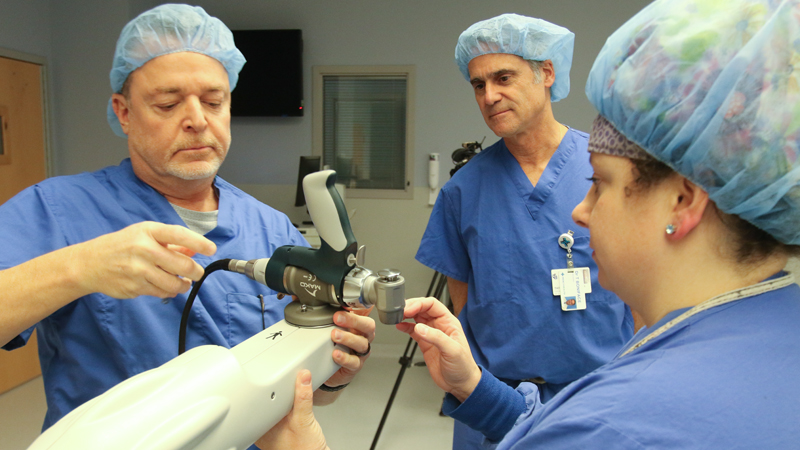Mako robot makes joint replacement more precise

ST. ELIZABETH BOARDMAN HOSPITAL
BOARDMAN
Surgeons at St. Elizabeth Boardman Hospital can now perform joint replacements with more precision, thanks to a medical robot called Mako.
The hospital purchased the Mako robot at the end of December, and orthopedic surgeons have begun using it for partial and full hip and knee replacements.
“A knee replacement is a very, very painful procedure. ... With a conventional knee replacement, up to 30 percent of the patients don’t like their knee as much as they should,” said orthopedic surgeon Dr. Tom Boniface.
The hospital performs about 500 hip and knee replacements annually. Use of the robot translates to gains in precision.
“Based on a CAT scan of the patient’s hip or knee, [the robot] creates a 3D model of the joint and helps us to plan how we’re going to make our cuts and how we’re going to position the implants,” said orthopedic surgeon Dr. Jeffrey Johnston.
The result is a more natural fit.
“The big difference is how you put it in and where you put it. ... Patients do better. They like their knees better,” Dr. Boniface said.
During the procedure, probes placed in a patient’s joint communicate with the robot and a computer screen, allowing surgeons to see the bone in detail.
“Normally, things we’re just feeling and judging based on feel, we’re getting some actual data on it,” Dr. Johnston said.
The live feedback also means adjustments can be made before beginning to cut the bone.
The robot also mitigates the potential for human error.
For example, it prevents the bone saw from cutting too deep and damaging an artery.
While St. Elizabeth is not an early adopter of the technology, it is ahead of peers in the region, such as UPMC in Pittsburgh and University Hospitals in Cleveland.
“We’re not the first ones on the block, but we’re also not the last,” Dr. Boniface said.
 43
43
